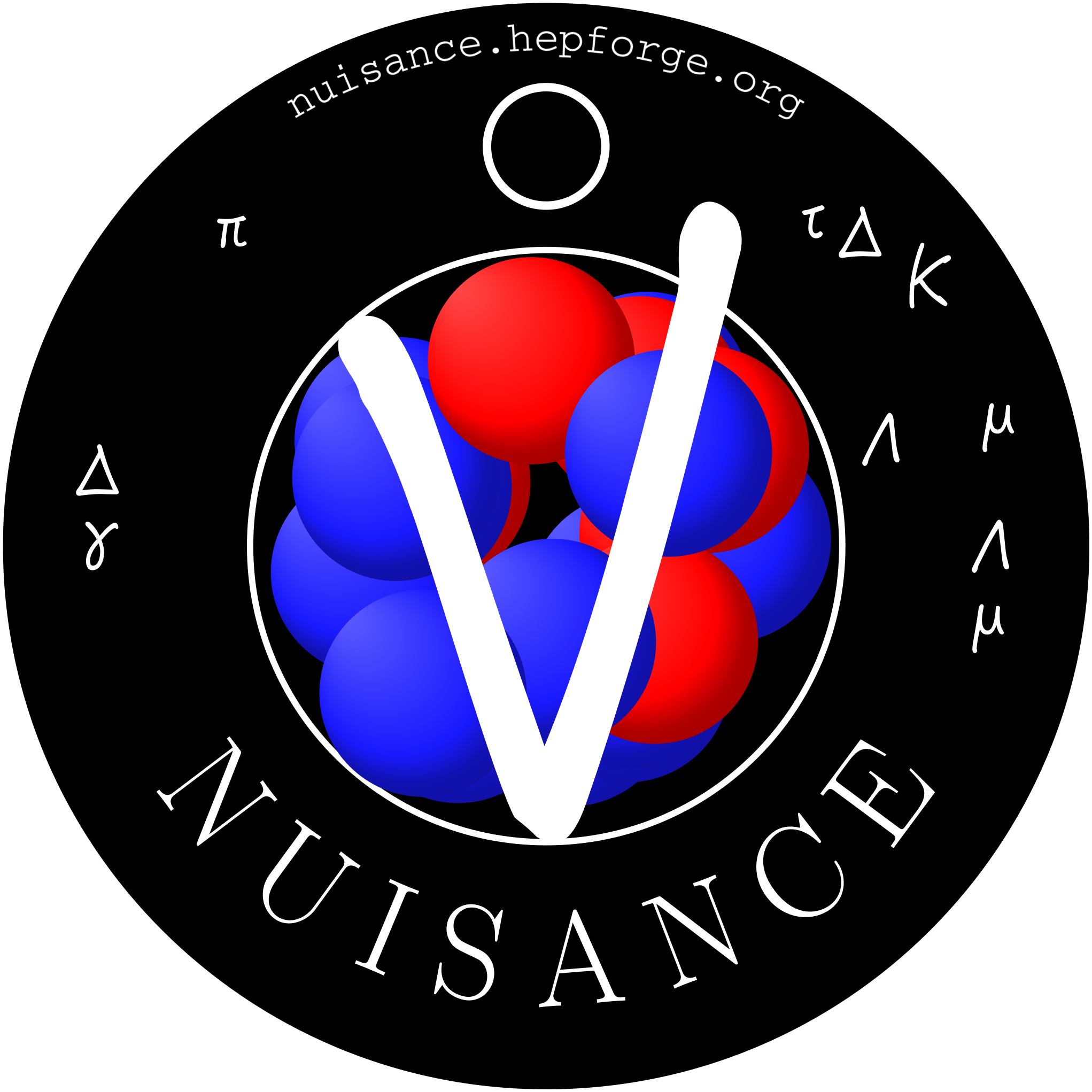close
Warning:
Can't synchronize with repository "(default)" ("(default)" is not readable or not a Git repository.). Look in the Trac log for more information.
- Timestamp:
-
Sep 4, 2016, 5:03:29 PM (9 years ago)
- Author:
-
Clarence Wret
- Comment:
-
--
Legend:
- Unmodified
- Added
- Removed
- Modified
-
|
v33
|
v34
|
|
| 4 | 4 | |
| 5 | 5 | Comments: some experiment determined fluxes purely by simulating the beamline, others fitted selected events (often CCQE) to get a sufficient interaction model description and then used that to go to a flux. In the best cases, these two methods are compared and the differences is an estimate of the flux error. This was not always the case though and the neutrino fluxes should always be taken with a pinch of salt! |
| | 6 | |
| | 7 | '''Beware of experiments using these sorts of methods.''' In correcting the CC1pi+ cross-section by using the CC1pi+/CCQE ratio by multiplying it by the CCQE cross-section, Wilkinson and Rodrigues found that the BNL total cross-section correction was large (arxiv:1411.4482v1) compared to ANL. This may be a result of how their flux was estimated. |
| | 8 | |
| 6 | 9 | |
| 7 | 10 | == ANL == |
| … |
… |
|
| 31 | 34 | * Comes from fitting CCQE events with MA=1.07 with not full data-set |
| 32 | 35 | * K. Furuno et al., ''BNL 7-foot Bubble Chamber Experiment -- Neutrino Deuterium Interactions, Proceedings of the Second International Workshop on Neutrino-Nucleus Interactions in the Few-GeV Region (NuInt02), To be published in Nucl. Phys. B (Proc. Suppl.)'', December 12-15, 2002, UC Irvine, USA, KEK Preprint 2003-48, September 2003, II |
| 33 | | * This is the flux which we use for BNL. It uses CCQE events with double statistics to the above and a fit with MA = 1.1 GeV to determine the incident neutrino flux. '''Beware of using these sorts of methods! In correcting the total cross-section by using the CC1pi+/CCQE ratio, Wilkinson and Rodgriguez found that the BNL total cross-section correction was large (arxiv:1411.4482v1)''' |
| | 36 | * This is the flux which we use for BNL. It uses CCQE events with double statistics to the above and a fit with MA = 1.1 GeV to determine the incident neutrino flux. |
| 34 | 37 | |
| 35 | 38 | ==== Anti-neutrino mode ==== |
